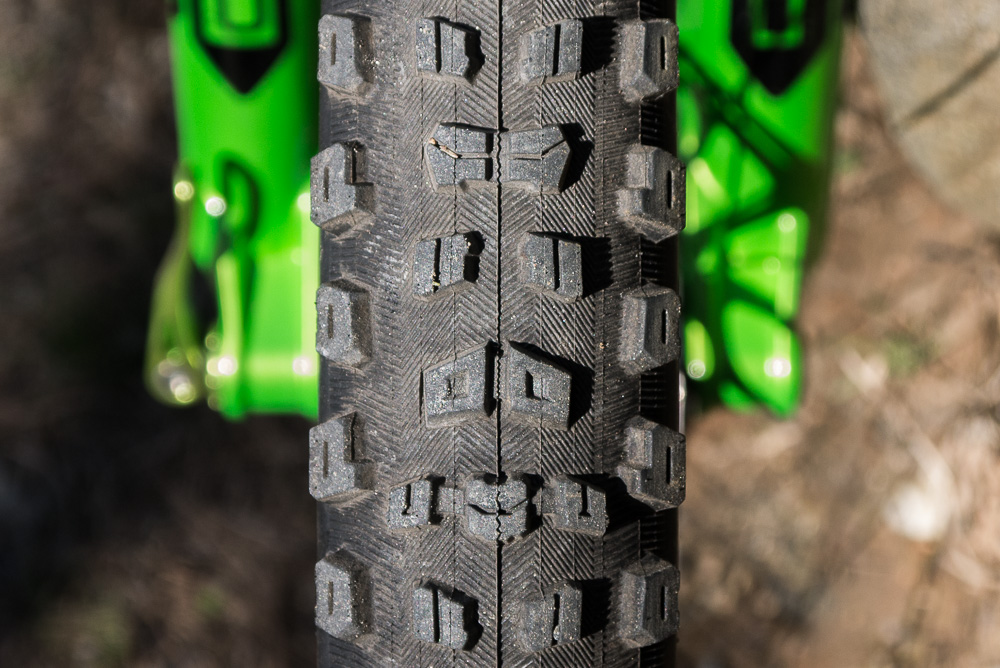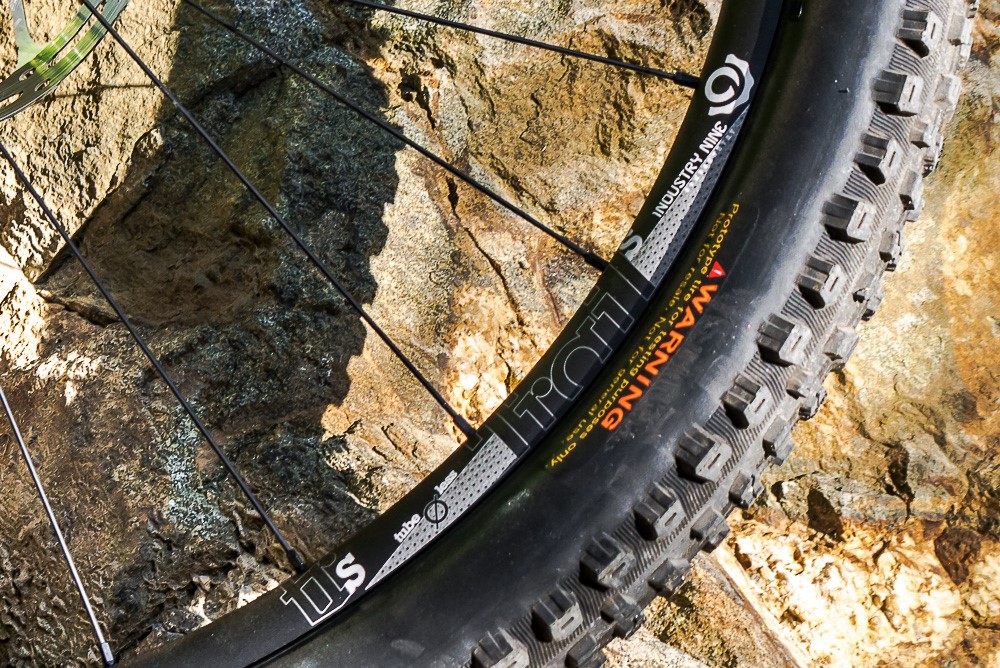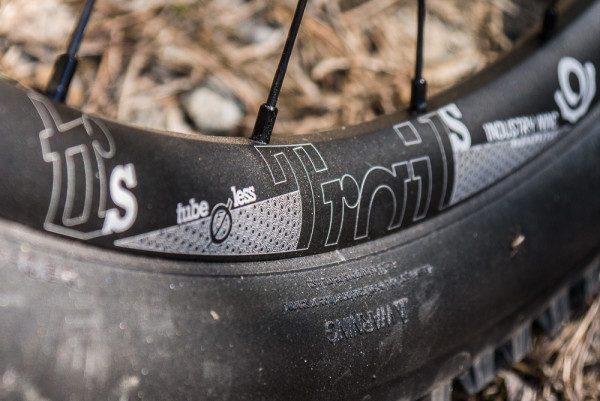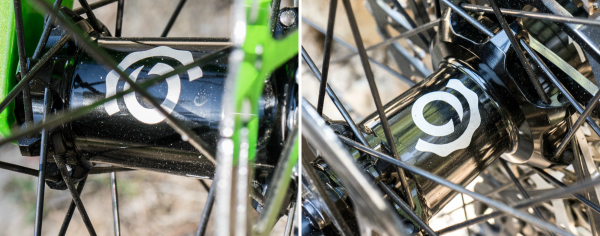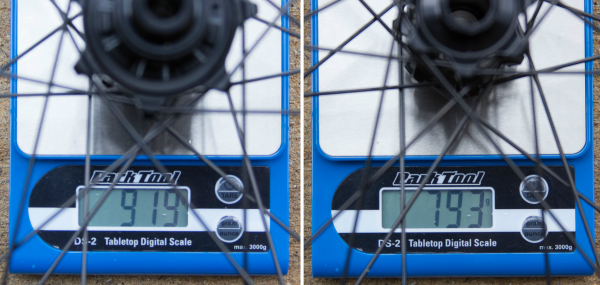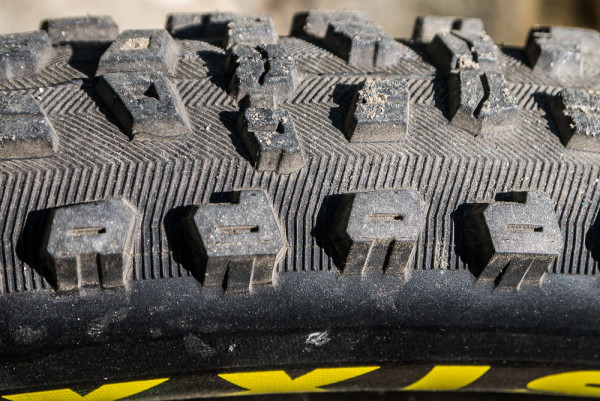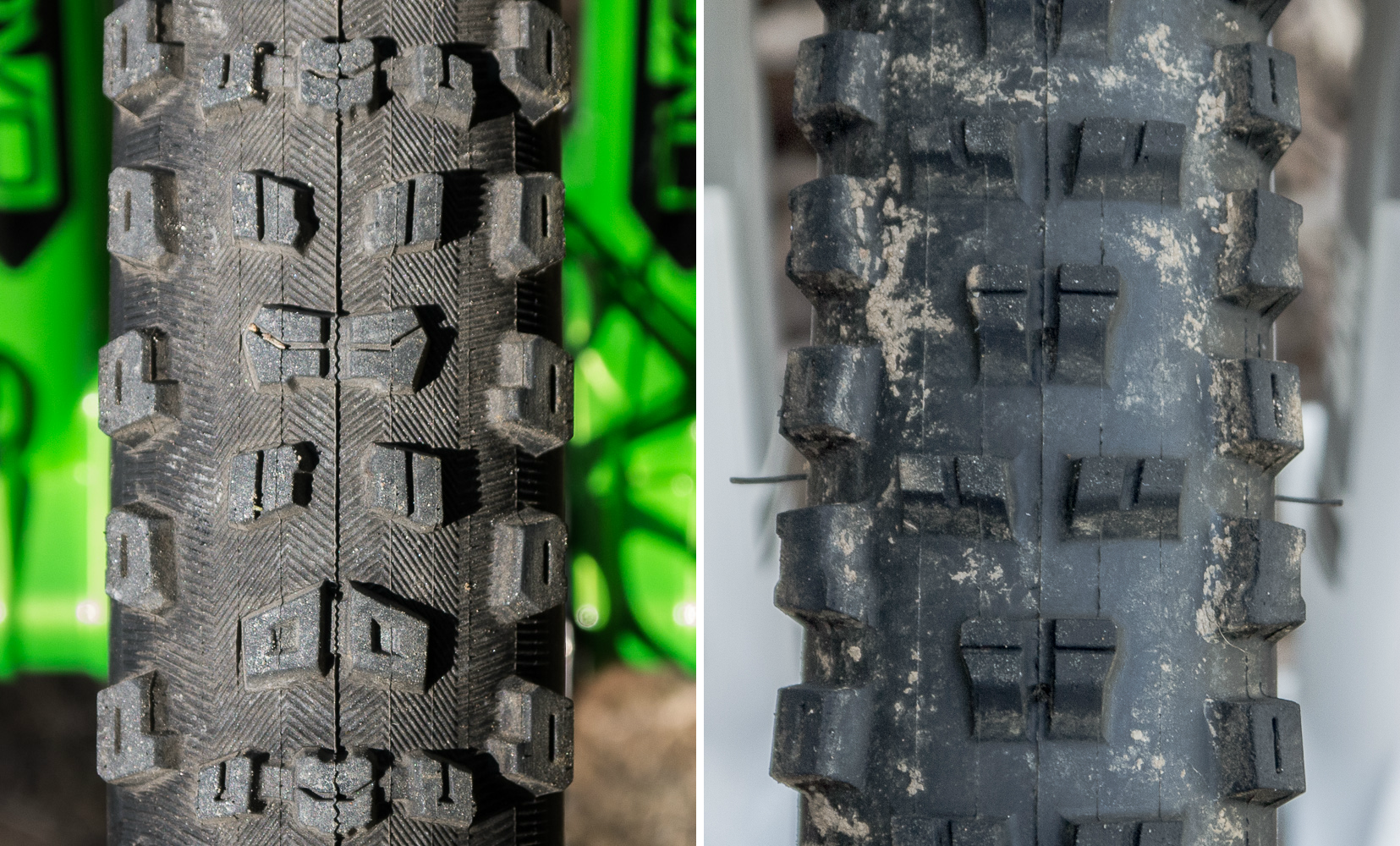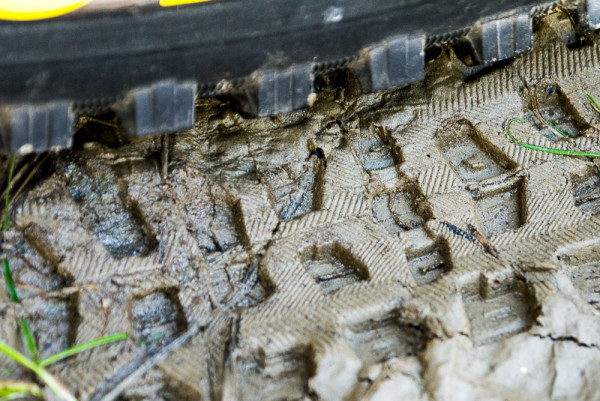What a great time to have a set of super aggressive tires show up shortly after receiving a pretty sturdy set of wheels from Industry Nine to test when the trails are a mess. The Aggressors are the latest offering from Maxxis to suit the increasing needs of aggressive Enduro riders and they are nothing like the go-to Highroller II’s that are preferred by many.
Also, Industry Nine’s Trail S wheels are surprisingly nimble and can take a beating. Check out why I think bang far outweighs the buck on these wallet friendly wheels from i9…
I9 has always been strict with details and even when cutting back to bring the price of a set of wheels down a bit, they still use the best of what’s available. Their Trail S wheels use a slightly different hoop as their more boutique wheels for a balance of weight and strength with a 24.5mm inner and 28.5mm outer width. The Trail S rim has a minimal bead hook, and an optimized bead seat profile for dependability. They used Sapim Race Butted steel spokes and Secure Lock nipples rather than their “made in house” CNC’ed aluminum spokes.
They come with a straight pull Trail S hub with Torch internals that contains a 3 pawl driver that gives you 6° of engagement rather than the standard 6 pawl’s 3°. All of this adds up to a whopping $350 savings over their snazzier, aluminum spoked “Trail” wheels retailing for only $845.
Truthfully, I expected I would like these as I have about 2 years on a set of their boutique 27.5 Enduro wheels that have the aluminum spokes. Knowing how laterally stiff they are with said spokes (plus being a smaller diameter), I thought “like” was going to be what I use to describe my feelings on the lesser expensive wheels. My initial impression of the wheels were that they felt nice and snappy under acceleration and climbing. However, I knew the true test would be when I descended a few of our flowy jump runs that have some pretty stout g-out turns where you will often hear your rear tire rub the stays (or you burp a tire).
Railing these wheels hard was not only fun, I could feel so much of how the rest of the bike was reacting. As much as I like a stiff wheel, I’ve always steered clear of the wide, deep-dish carbon wheels on the trails because they’re just too stiff. When a wheel has too little “give” it can decrease a wheel’s ability to “absorb” causing a sort of chattered loss of traction. That is what made the Trail S wheels so much fun. I tried these on both a hardtail and a 100mm FS bike and think that these would be right at home on anything with between 100-140mm of travel. After that, you’ll likely want something a little burlier.
At a claimed 1690 g without valve stems and rim tape, (my scale shows 1,712 grams WITH rim tape so that is pretty accurate), the Trail S wheels weigh only 60 grams more than the higher end Trail wheels. Coming in at a respectable weight, the wheels were nothing short of durable. Even after coming up a tad short on a landing where the rear wheel cased the lip of the landing (hard), it took just a couple of minutes in a truing stand to put things back where they were.
Aside from the fact I liked loved how the wheels rode and held their line, I9’s Torch hubs are easy to maintain and you can get any of their wheels in about every non-fat configuration from QR to boost/non-boost, to even the more obscure 31mm Rock Shox compatible “Torque Caps.”
Traction and I have a love/hate relationship and many share this. More is better doesn’t hold true if you can’t tell what the tire is doing… until it’s too late. There have been a lot of tires I’ve loved, many I’ve hated, and some that I loved once I learned its characteristics. Maxxis has had a pretty long running reputation in the dirt and many non-sponsored teams will even have an abundance of sharpies in their tool-box. And just in the spirit of full disclosure, I used to work for Maxxis back in the day. In the last several years, there has been an explosion of DH’ish tires getting put on a diet & aggressive trail tires widened then labeled an All-mountain/Enduro tire. Maxxis went to the drawing board to design an Enduro specific tire from scratch and came back with the aggressor.
The Aggressor’s tread has more of a block like tread (think motocross tires), and the tire’s carcass has a knurled surface between each tread block.
Comparing it to the Highroller II, the go-to for many, the Aggressor has a pattern of five different rows of tread compared to the HRII’s two. From looking at the shape and sipping, it seems as though these were designed to react to several variances. Like many tires on the market, the Highroller II’s have a ramped center tread to decrease rolling resistance, but the drawback to that is that it doesn’t work its way into the soil as easily. The Aggressors instead use a block tread with no ramping and it was apparent how much better it “dug” into the dirt in almost every situation compared to the HR II.
These are not a fast tire. In an “Enduro” situation, rolling resistance isn’t as important as you might think as racers are only timed on the descents of which pure traction and (late) braking are far more important. If there is one thing this tire does great is BRAKE! (note: be careful getting back on and late-braking a XC bike with fast tires after spending time on these). The Aggressors plant themselves hard as soon as you touch the brakes letting you chase the next turn right up until the last second.
Cornering… well, like the Highroller II, these I consider a little bit of a learning tire, but not near as much as the HR II. The HR II’s tend to cut out a little then grab again where as the Aggressors seem to have a much better transition (far more predictable). They also like to be pushed… challenged even. Those moments you feel like you know that tire is about to give and it doesn’t so you try harder. Next thing you know you’re hitting corners and watching dirt roost from the front tire, but the bike doesn’t shift. The shorter (in length and height) side knobs don’t flex as much and tear into the dirt more than flex and lay on the dirt. Even on hardpack, these will loosen the topsoil. Yeah, these things throw some dirt so a little mud-guard and goggles may be in order if you are planning on plowing some loam with these (which I highly recommend).
